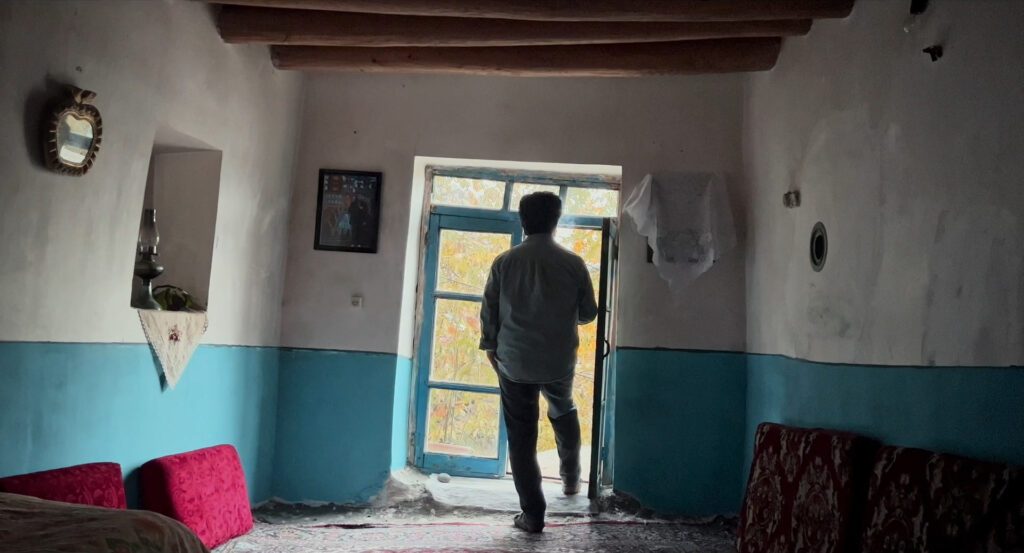
No Bears
2022, directed by Jafar Panahi
So much happens in the nearly seven-minute opening shot of No Bears that even a scholar of Iranian cinema could be excused for missing the allusion to Kiarostami at the end – but in the second shot, when Ghanbar raises a ladder to the roof, it should ring a familiar note. A dignitary from Tehran has come to a western Iranian farming village to make a documentary. Finding his communication cut off, he seeks higher ground to catch a clear signal. The same situation had made an important plot point in The Wind Will Carry Us, only now it’s a wireless internet connection that’s broken instead of a cell phone call. This is our hint that Jafar Panahi will be updating a story told by his mentor, bringing the earlier film into the present day and thus exposing what has changed in the last twenty-three years.
Further parallels encourage this line of comparison. The visitor from Tehran finds himself at odds with the villagers, whose values are so different. In both films photographs cause disproportionate trouble, generating much of the plot. Each film features a ceremony – a funeral for a woman who has lived a hundred years, or an engagement ceremony for a couple with only days to live. The Wind Will Carry Us is filled with mentions of death, while No Bears culminates in parallel stories of death. Each film is sharply divided between urban and rural, and between high and low. Panahi’s host Ghanbar, for instance, is routinely positioned below his more cosmopolitan guest, and we’re repeatedly told that he works with a pick and shovel, like the ditch-digger in Kiarostami’s film.
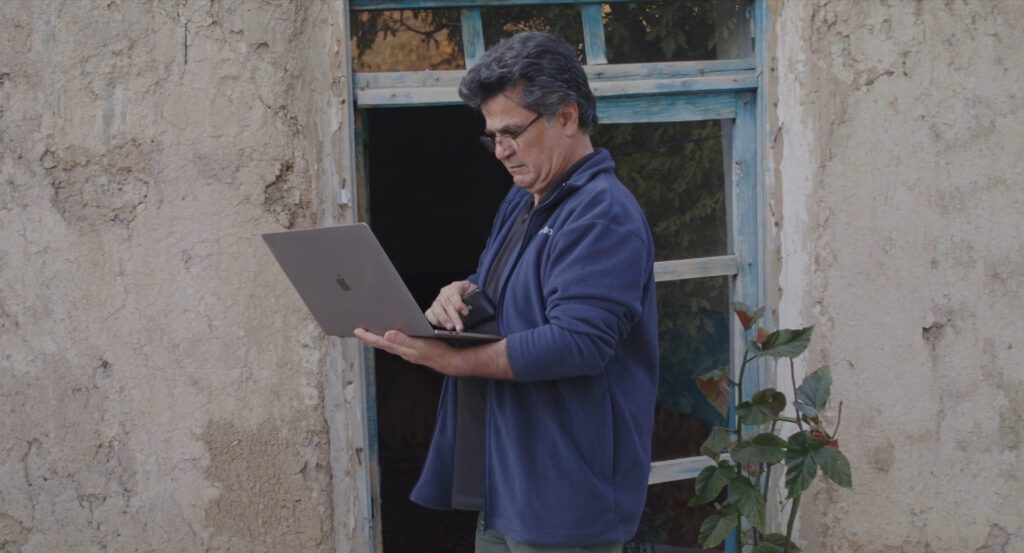
On these last points we can begin to discern the key difference. Kiarostami had projected a positive image for the outside world, affirming Iran’s vitality in contrast to its grim reputation in the West. No matter how you might characterize the people occupying Iran’s highest places, the ordinary people of the valleys, farms, villages, and presumably the cities were vibrant and life-loving like the ordinary people of any other country. In Panahi’s film this idealistic portrait is no longer applicable. The village chief tells Panahi that “farming is not rewarding anymore. The drought finished off farmers. They make their living by exchanging smuggled goods at the border.”
No Bears makes no further mention of climate change, but in this almost offhand remark it acknowledges that we now live in a world where the optimistic spirit of Kiarostami’s film is no longer pertinent. The high-low and urban-rural distinctions which structure both films are no longer contrasts but rather parallels. High or low, wealthy or poor, important or ordinary, our problems are equivalent because we’re all bound by a shared planet.
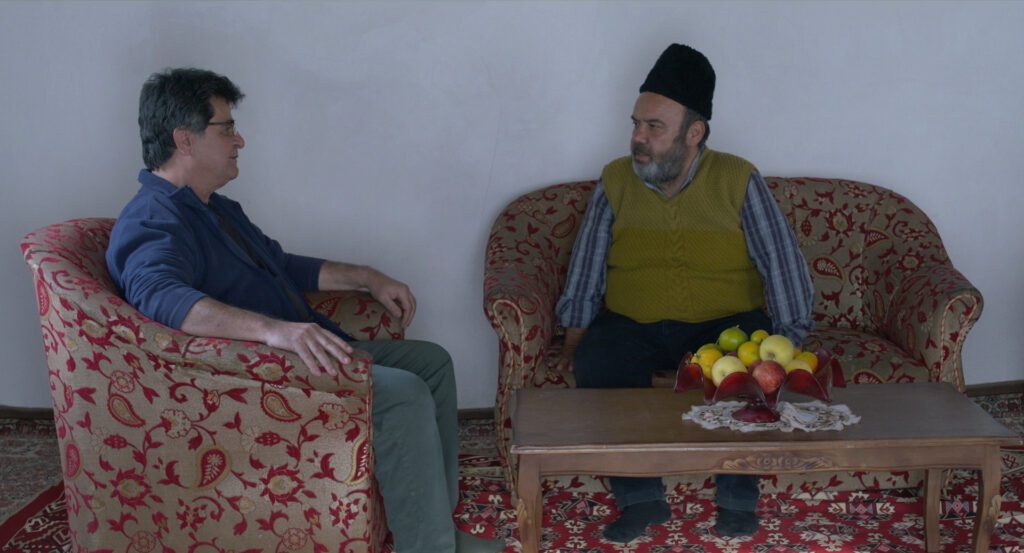
No Bears tells parallel stories of doomed couples seeking a better life elsewhere. Soldooz and Gozal are young lovers trying to elope, fleeing the conservative village where Gozal is promised to the boorish Yaghoob. Zara and Bakhtiar are a middle-aged urban couple who have been trying to emigrate to Western Europe via Türkiye. Panahi himself plays the hinge between the two stories, shooting a fictional semi-documentary on the older couple (from across the border) and getting caught in the younger couple’s drama by accident. One story revolves around a still photograph, the other around a film. Each includes a celebration (a foot-washing ceremony and a birthday party) where everyone but the couple is jubilant, and each ends with a point-of-view from a vehicle driving downhill to a body of water where the dead bodies are discovered. It’s both ironic and true to life that one couple’s goal, a better life in Türkiye, is the other couple’s starting point. Soldooz and Gozal would be happy just to make it out of Iran, while Zara commits suicide in Türkiye thinking she and Bakhtiar will never get to Europe together. The point is not that one couple is more privileged, but that their problems are similar in spite of differences in age, class, and background.
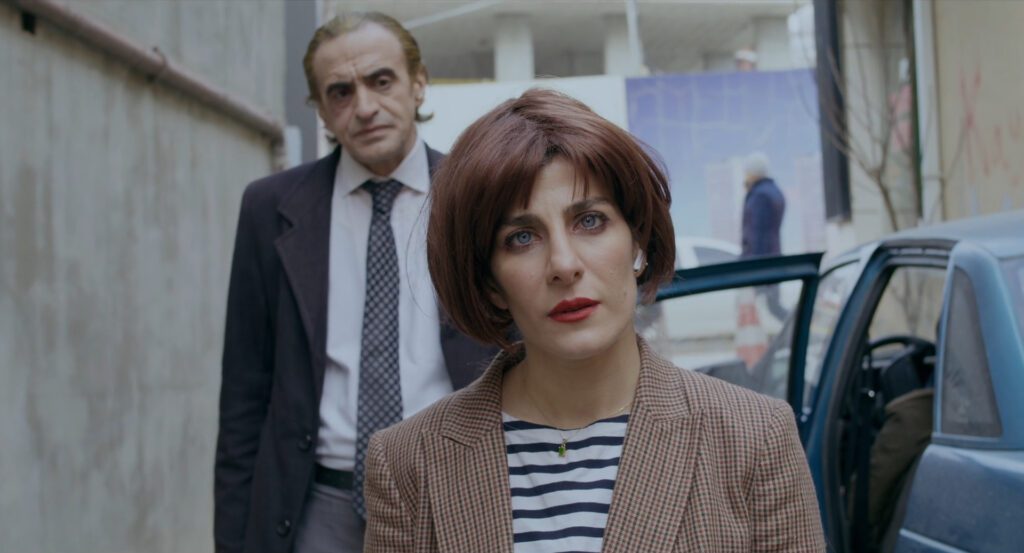
The comparison to The Wind Will Carry Us puts the difficulties of our present age in context, but it doesn’t account for the plot or techniques of No Bears, and it doesn’t explain the odd title. The film ends with tragedy and draws a dire picture of our times, but the opening points to the humanity within. First a vendor carries a stack of flatbreads on his head, and his melodious voice will reappear minutes later. Next a tea vendor comes around the corner, and the camera turns to follow his steaming samovar. A pair of street musicians enters, bringing joy to the scene and to Zara’s customers at the restaurant. The main street and the outdoor steps are decorated in rainbow colors. All these touches let us know that we’re in benevolent hands, that the director is looking out for our nourishment and entertainment, and that if we care to look closely we’ll get something hopeful from the experience.
When Panahi calls “Cut!” to interrupt the opening shot, and Reza steps in to address the director, and even more when the camera pulls back from the laptop to place us in Panahi’s lodgings across the border, again it’s a lesson from Kiarostami, who had willfully confused documentary and fiction in films like Through the Olive Trees and And Life Goes On. The technique is a long-standing hallmark of Panahi too, and it prompts us to look at a scene in multiple ways simultaneously. While watching the drama of Zara and Bakhtiar, we also see Panahi trying to tell their story, and because we’re likely to suspect that that too is scripted, we’re invited to consider the actual filming process, standing back at a third remove. No Bears will henceforth cut back and forth between the stories, surprising us with cuts that multiply the layers of vision, while also pointing to Panahi’s own biography as a banned filmmaker trying to continue his work and reach an audience.
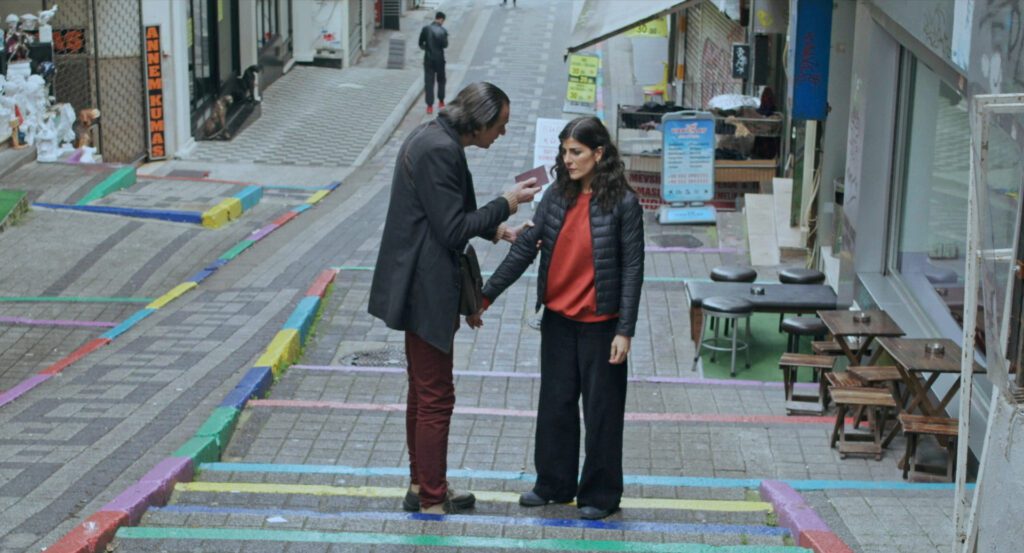
All of this can get dizzying, but it’s simply a variation on what cinema has been doing for over a century. As Ingmar Bergman argues in Persona, the essence of good cinema is ambiguity, and the layered points of view in Kiarostami’s and Panahi’s films are one way of introducing ambiguity. The tale of Panahi’s troubles in Jaban is also ambiguous. Did he really photograph the lovers under the walnut tree? His shutter snaps when he turns away from the boys on the terrace, but we don’t see the couple, and we don’t know what was in the frame, nor how much the boy witness really knows. Did Panahi delete the file after encountering Gozal on the road at night? Did he back it up elsewhere? Because these questions aren’t answered, we’re invited to imagine all possibilities. Ambiguity mirrors real life, where it’s often not easy to find an exact truth. The three deaths and Bakhtiar’s grief contrast with all the preceding ambiguity. Ambiguity is essential to cinema because life tends to be ambiguous, whereas death is pointedly unambiguous.
The locations of the dead bodies form a symmetry. Zara drowns by what seems to be the same lakeside restaurant where the birthday party took place, and the young couple, after being shot trying to cross the border, drag themselves to the brook where the foot-washing ceremony had occurred. The sites of celebration become sites of tragedy. The unhappiness that would lead to tragedy was already present in each celebration, but the celebrants were oblivious to it.
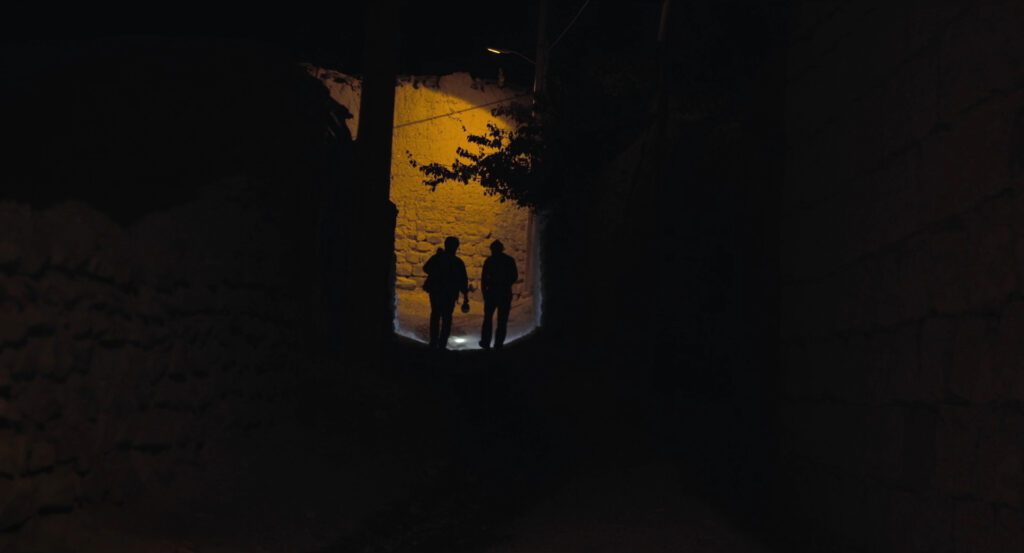
At the end Ghanbar urges Panahi to get away from the scene of death, and Panahi drives up the road a bit before stopping. After the unambiguous finality of those dead lovers, the film ends on a note of ambiguity, which we should take as a sign of life. Panahi pulls the emergency brake, and the film cuts to black. Is he stopping to reflect before moving on? Does he plan to go back? Will he finish the film he was making? Without answering those questions, the title can help us make sense of the open ending. On the way to the swearing ceremony a village elder had pulled Panahi aside and warned him of bears on the path. After discussing things over tea, the same old man confessed to him: “There are no bears. Nonsense! Stories made up to scare us. Our fear empowers others.” In a world governed by superstition and tyranny, where a changing climate dries up crops and inequality drives people across borders, where tragedy lurks behind joy, we must face life with the courage the old man imparts to Panahi. We must live, he goes on to say, as if the bears are made of paper. When Reza took Panahi to the hills at night and told him he was standing on the exact border of Iran, the director jumped back, resolved – despite every temptation – to stay in his native country. At the very end, when he pulls on the brake, we are no longer looking at the fictional Panahi we’ve been watching, but rather at the real director, resolving to stay and confront the problems that surround him.
CONNECTIONS:
A Matter of Life and Death – Seemingly offhand line alludes to a current global threat (nuclear war or climate change), putting the film’s argument in context; ambiguity as a token of life
Stalker – Character who stands at the edge of a hopeful crossing and recoils from it
The Wind Will Carry Us – Visitor from Tehran who seeks a high place for electronic reception; recording of ceremony; unexpected trouble over one or a few photographs; significant distinction between high & low; comment on vitality and death
There Is No Evil – Subversive Iranian film that ends ambiguously with a car stopped on a road; possible allusions to The Wind Will Carry Us